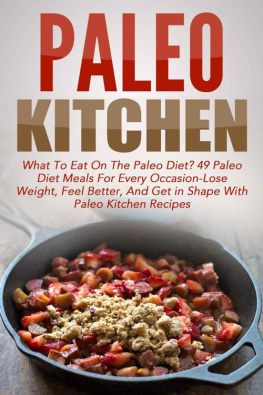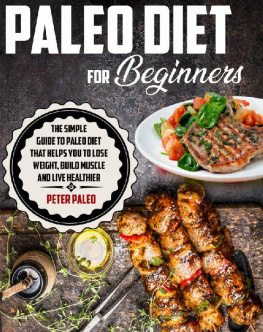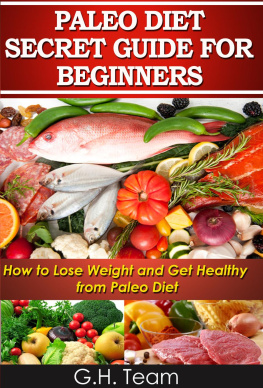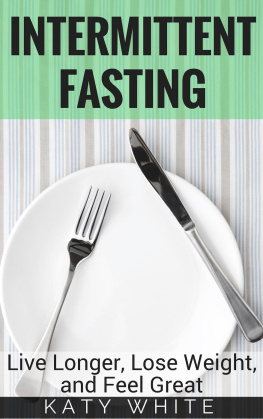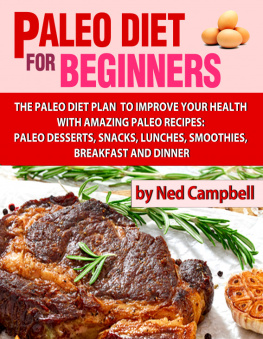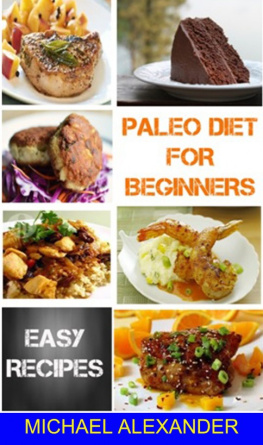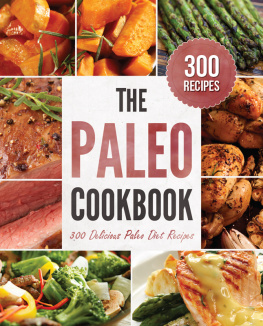Learn how to prepare quick and easy Paleo dishes within the comforts of your own home with Paleo Kitchen. Prepare delicious low carb foods using healthy ingredients that will provide you with energy and nourishment everyday!
Find out how you can follow the Paleo diet with whatever available budget you have, and discover 49 delicious recipes to follow and help you get started on a healthier lifestyle.
The recipes included in this book are breakfast, soups, meat, poultry, seafood, and hot vegetable dishes. You will also find side dishes and desserts to make each meal complete and special.
With the variety of dishes that are so easy to make, you will certainly find it effortless to create a Paleo meal plan that you can easily follow. Incorporate the Paleo diet with an active lifestyle and you will definitely be on your way to losing weight, getting in shape, and feeling great!
Chapter 1 - The Paleo Diet Basics
The Paleo diet is all about going back to the basics, and by basics, that means eating the way our ancestors from the Paleolithic era did, which was millions of years ago.
But why on earth should you start eating like a caveman?
Well, there is the fact that cavemen and women were hunters and gatherers. This means that they had to rely on muscle and sharp instincts to survive. The only meals that they had consisted of whole foods that were gathered fresh from the wild and meat that they had to chase or capture. The nutrients that they got from these food sources alone were able to provide them with enough energy to tackle the challenges of life before the Agricultural Revolution. They were able to enjoy the full benefits of healthy and preservative-free foods. They also learned to eat just enough portions for them to get by.
Say goodbye to unhealthy foods that promote inflammation
Until now we still need that caveman kind of energy in the modern world, but sadly, many people have the tendency to feed their bodies with so-called convenient fast foods that actually do more harm than good.
These foods promote inflammation that can trigger allergies and further lead to more dangerous health conditions such as obesity, heart disease, and cancer. Furthermore, the foods that dominate the traditional Western dieters plate contain too much calories. The excess calories get stored as fat in the body because of lack of exercise. However the body would start to crave for more foods after only a few hours because of the lack of micro-nutrients and fiber; the calories alone are not enough to give the stomach that feeling of satisfaction.
To help combat this escalating problem, the Paleo diet is meant to wean your body from eating too much processed foods.
Here is a list of foods that you can start minimizing (and eventually remove) from you diet:
Wheat and all grains
Dairy products
Soy
Legumes
Foods with concentrated sugars and/or sweeteners
Processed foods (canned, packaged, dehydrated, etc)
Vegetable oils
On the other hand, there is a vast range of foods that you can eat under the Paleo diet. Basically, these are foods that become easily spoiled: fresh fruits and vegetables, beef, poultry, veal, pork, lamb, seafood, and nuts and seeds. Healthy fats are also a part of the Paleo diet, so expect to see some coconut oils, olive oils, and animal fats in the recipes. With the help of recipe books such as this, you will be surprised to learn that there is a whole lot more to life than gluten!
Prepare to be a lean, mean, fighting machine in the urban jungle!
Keep in mind that the Paleo diet alone is not enough to instantly transform a person from pudgy and sedentary to someone who can do sprints that can outrun a cheetah. The nourishment from a Paleo diet should be maximized by engaging in regular exercise.
Nevertheless, by transitioning to the Paleo diet, you are already taking steps towards reducing your risk for obesity, diabetes, auto-immune diseases and heart problems. Furthermore, by sticking to a primarily Paleo meal plan, you will be able to stabilize your blood sugar levels, help maximize your weight loss program, experience fewer allergies, feel more energetic, increase your minds sharpness, and improve your blood lipid profiles! People who are suffering from acne and skin problems are also noticing improvements because of the anti-inflammatory nature of the Paleo diet.
Setting up your Paleo Kitchen
If you are a Paleo newbie, fret not! This section will help you get started on your Paleo diet journey through these easy cooking and kitchen tips.
Tip 1: Whole foods are actually cheap
You might think that sticking to a predominantly whole food diet will cost you a lot, but on the contrary, you will get to save more money. The key is to find great sources of affordable whole foods in your area and to decide on which types of whole foods are healthy and would fit your budget.
In purchasing meats such as beef, lamb, pork, eggs, and poultry, the most affordable ones would be those that are antibiotic-free and with no added hormones. If you can afford organic, then that would be even better. The best kind is the 100 percent grass-fed and finished (in the case of beef and lamb) and pasture-raised (in the case of poultry and pork).
Affordable seafood that you can add to your Paleo kitchen should be sustainable farmed, but if you want to amp it up a bit then go for wild caught. The best would be seafood that are wild-caught and sustainable.
Purchase fruits and vegetables that are low pesticide, in-season, and locally available as possible. If your budget allows it, opt for organic.
When shopping for oils, it is best to purchase the unrefined, organic variety. The best kind should be raw and cold or expeller pressed.
Tip 2: Buy in bulk straight from the rancher
Grass-fed beef is usually considered as expensive, but if you purchase directly from a Community Supported Agriculture (CSA) program or from the rancher, you will be able to save a lot of money because you no longer have to pay for the premium.
You should also purchase herbs and spices in bulk, since these tend to be cheaper. If possible, start growing your own herb garden. Most herbs are extremely low maintenance and do not require much space.
Tip 3: Become a CSA member
When you are a CSA member, you will pay (at an affordable price) at the start of the growing season and then during harvest time, you will be able to acquire your share of fresh produce each week.
Tip 3: Buy from the local farmers market
Foods that are not in season and imported tend to be less nutritious yet more expensive. Buy your ingredients from the farmers market and match your recipes to suit what is available. Shopping from the farmers market is cheaper since there is no need to pay the middleman.
Tip 4: Stock up your Paleo pantry
Aside from fresh whole foods, herbs, and spices, it would be a good idea to fill your kitchen with these essential Paleo ingredients. That way, you can easily whip up a delicious and healthy meal even with only a few key ingredients at hand.

